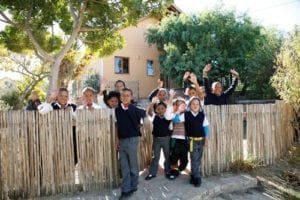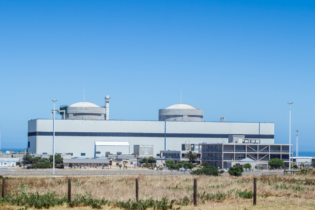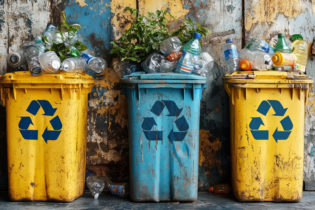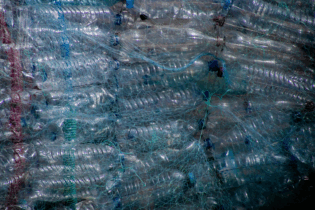As I’m writing this, I’m at the Leshiba Wilderness, on top of the Soutpansberg Mountains in Limpopo, which forms part of the Vhembe Biosphere Reserve (VBR). With unparalleled biodiversity, extraordinary cultural heritage and strategically located at the centre of sprawling peri-urban settlements, the VBR is highly contested. By Prof Mark Swilling
Some of the largest remaining coal reserves are set to be mined within the VBR using opencast mining methods just north of the mountains (by all the major companies, including some with sizeable Chinese ownership); land claims gone wrong are dotted across the VBR; firewood, river sand and water gets unsustainably extracted all the time by large and small operators; vast commercial agricultural estates that pour countless tonnes of chemicals into the rich red soils; and scientists can show how global warming is reflected in bush encroachments and the changing nature of the small animal population with uncertain knock-on effects up and down the food chain. In the meantime, the provincial and local governments want their pound of flesh from the tourism potential, and poverty-stricken local communities look to the VBR for jobs and natural resources (from soils, to water, to firewood). In this context, does nature itself stand any chance? Can one seriously consider ‘sustaining’ what nature has to offer as everyone takes what they can, from the Chinese investor who needs more coking coal to be exported to China, to the commercial farmer who needs to add more increasingly expensive fertilisers every year, and the local grandmother who needs wood to cook for her many grandchildren? Or should we just accept the reality of the situation and define ‘sustainable development’ as just doing slightly less harm while we inevitably destroy the source of all livelihoods (not just human ones)? In short, maybe sustainability means nothing more than retarded collapse. There are basically three mainstream perspectives on sustainability. The most well-known is the carbon-centred perspective that equates the challenge of sustainable development with climate change. In this view, often associated with the Intergovernmental Panel on Climate Change, the problem is carbon dioxide (CO2) emissions from the burning of fossil fuels. It follows that from this perspective, emissions must be reduced initially by using fossil fuels more efficiently, and over the long run, fossil fuels need to be phased out.\ Although no global agreements can be reached, 33 countries had carbon taxes by 2013, covering 850 million people and approximately 30% of the global economy. This perspective, therefore, is clearly starting to have an impact. However, even if global warming was not happening, the planet is falling to pieces due to (a) the rapid degradation of biodiversity and the resultant threat to ecosystem services that nature provides, and (b) resource depletion. Like the carbon-centre perspective, the biodiversity and ecosystems perspective is interested in the negative environmental impacts of the dominant modes of production and consumption. Associated with the Millennium Ecosystem Assessment that reported in 2005, this perspective gives emphasis to the fact that over 60% of the ecosystems that humans depend on for both social well-being and economic development are degraded. Except for places like Costa Rica and South Korea where deforestation has been reversed, the evidence in general suggests that biodiversity degradation is getting worse and that the poorest people suffer the most as a result. For example, the last global assessment of the state of health of agricultural soils took place in 1990 – at that stage, 23% of all soils were seriously degraded. Since then, about 12 million hectares per annum of agricultural soils have been lost due to overexploitation, including overuse of chemical fertilisers and pesticides. Healthy soils, like water, are renewable resources that are the emergent outcome of interactions between countless elements of highly complex ecosystems. Mess with these complex systems and unintended consequences (some of which are undesirable) are the inevitable outcome.The resource depletion perspective is the newcomer to sustainability science. Associated with the work of the International Resource Panel (IRP), which was only established in 2007, this perspective is focused on the resource requirements of the global economy. These resources include fossil fuels, biomass (anything that can be grown), construction minerals, and industrial minerals and metals. The IRP calculated that in 2005 the global economy depended on 60 billion tonnes of stuff extracted from the crust of the earth – in reality, double this amount is extracted, but only half used (the rest contributing to environmental impacts). This translates into an average consumption of 8 tonnes per capita, but with the average American at 25 tonnes, the average European at 16 tonnes, and the average Ghanaian at 3 tonnes. Under a business-asusual scenario, consumption by 2050 is set to go up to 140 billion tonnes if everyone converged at 16 tonnes per capita. But if the world is to be run in accordance with the science of the IPCC (which all governments approved), average consumption by 2050 at a population of 9 billion people will need to be 6 tonnes per capita. What the work of the IRP is also showing is that there is evidence of resource depletion, resulting in a steady rise in prices.
The most popularly known work on resource depletion is associated with ‘oil peak’. This refers to the notion that given that there is a finite amount of oil in the ground, at a certain point the total quantity of oil produced will peak and then decline. It is time to recognise that sustainability is about all three of these dimensions: carbon emissions resulting in global warming; biodiversity degradation, which undermines the ecosystem services on which all life depends; and resource depletion (in particular oil). When combined, it becomes possible to comprehend why there is much discussion, since the start of the global economic crisis in 2007/8, about the transition to a ‘green economy’. Although much of this discourse is merely about slightly greening business-as- usual, the only way to explain the rise of this discourse (and in particular the more radical versions) is with reference to the increasingly apparent unsustainability of a grossly unjust global capitalist system that exacerbates inequalities and the continued exploitation of nature. The Green Economy Report, published by the United Nations Environment Programme in 2011, made it very clear what the core problem really is: “The causes of these crises vary, but at a fundamental level they all share a common feature – the gross misallocation of capital. During the past two decades, much capital was poured into property, fossil fuels and structured financial assets with embedded derivatives. However, relatively little in comparison was invested in renewable energy, energy efficiency, public transportation, sustainable agriculture, ecosystem and biodiversity protection, and land and water conservation.” I have no doubt that unless the underlying challenges of climate change, biodiversity degradation and resource depletion are addressed through radical innovations that must transform everyday life and deliver much greater equality (which means consumption reduction for the million or so over-consumers), we will not be able to move beyond the current global crisis into a new golden age of shared prosperity and sustainable development. While we contemplate these challenges, we need to also act to find real solutions in local spaces like the VBR. There are three conditions that need to be met when transforming a local space: a shared understanding within a core group of change agents that is based on trust, a capacity for innovative practice (which means being able to ignore the advice most professionals are trained to provide), and a stomach for profound disequilibrium. If sustainability is to be more than retarded collapse, thousands of grassroots initiatives to build a shared sense of destiny and reconnections to nature will be required. There is nothing more exciting than figuring out what this means in practice with a group of trusted friends.








